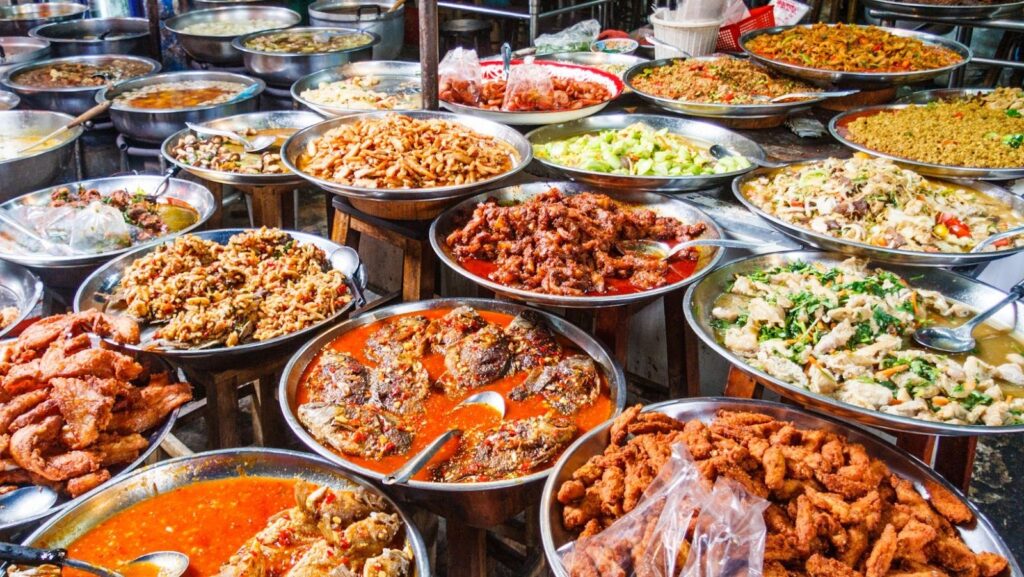Food is more than sustenance; it’s a cultural passport that allows us to explore the rich tapestry of global traditions. Cooking traditional foods with children not only nourishes their bodies but also feeds their minds with knowledge about different cultures. This article delves into the educational benefits of exploring traditional foods and how cooking together can foster a deeper appreciation for diversity.
- The Cultural Significance of Traditional Foods
Traditional foods are the heartbeat of cultural identity. They embody centuries-old traditions, rituals, and values unique to each community. From the spicy curries of India to the comforting pasta dishes of Italy, these foods connect us to the stories of our ancestors and the landscapes they inhabited. Whether it’s a Lunar New Year feast or a Ramadan iftar, traditional foods play a central role in celebrations, bringing families and communities together in shared joy and gratitude.
- Benefits of Cooking Traditional Foods with Kids
Cooking traditional dishes with children is a hands-on lesson in cultural understanding. It goes beyond teaching them culinary skills; it opens their eyes to the diversity of the world. By exploring recipes from different countries, kids learn about geography as they locate the origin of each dish on the map. They discover history through the migration of ingredients and the evolution of cooking techniques. Moreover, cooking together sparks curiosity and encourages children to ask questions about why certain foods are important to different cultures. A kids cooking subscription box, such as those offered by companies like Eat2Explore, can enhance this learning experience by providing curated recipes and educational materials that delve into the cultural backgrounds of each dish.
- Getting Started: Choosing Your Recipes
When choosing traditional recipes to cook with kids, simplicity and accessibility are key. Start with dishes that have few ingredients and clear instructions, such as Mexican tacos or Japanese sushi rolls. Consider the cultural significance of each recipe—does it commemorate a festival or honor a historical figure? Select dishes that resonate with your family’s interests and dietary preferences to ensure an enjoyable and educational experience.
- Ingredients and Their Cultural Context
Ingredients are the building blocks of traditional dishes, each telling a story of its own. From spices traded along ancient Silk Roads to vegetables indigenous to specific regions, ingredients reflect the geography, climate, and agricultural practices of their origins. For example, the use of coconut milk in Southeast Asian cuisines highlights the tropical landscapes where coconuts thrive, while the abundance of seafood in coastal regions reflects a reliance on ocean resources.
- Cooking Techniques and Methods
Cooking traditional foods involves mastering unique techniques and methods passed down through generations. Whether it’s steaming dumplings in bamboo baskets or slow-cooking stews over open fires, these methods are rooted in practicality and cultural symbolism. Children can learn valuable skills such as knife safety, measuring ingredients, and the importance of patience and precision in cooking.
- Learning Through Cooking: Activities and Discussions
Engage children in interactive activities while cooking to deepen their cultural understanding. Encourage them to research the history and symbolism behind each dish. Discuss the role of food in celebrations and rituals, such as the symbolism of rice cakes during Korean Chuseok or the communal feasting of Native American powwows. Use storytelling to weave together the threads of tradition and teach children about the values embedded in each recipe.
- Tasting and Sharing the Experience
The culmination of cooking traditional foods is the joyous act of tasting and sharing the meal. Encourage children to describe the flavors and textures they experience, fostering sensory awareness. Discuss the etiquette and customs associated with dining in different cultures—whether it’s using chopsticks in Japan or sharing a meal from a communal plate in Ethiopia. Through these shared meals, families create memories that bridge cultural divides and celebrate diversity.
- Beyond the Kitchen: Exploring Cultural Context
Extend the learning experience beyond the kitchen by exploring the cultural context of traditional foods. Visit local markets or cultural festivals to see ingredients firsthand and meet people who can share personal stories about their culinary traditions. Dive into books, documentaries, and online resources to deepen your understanding of the cultural significance of food and its role in shaping identities and communities.
Conclusion
Cooking traditional foods with children is more than a culinary adventure; it’s a journey of cultural discovery. By exploring recipes from around the world, families can cultivate empathy, respect, and appreciation for diverse cultures. Through hands-on cooking experiences, children gain a deeper understanding of geography, history, and the universal language of food. As we share meals and stories, we pass down traditions that enrich our lives and connect us to our global community.
